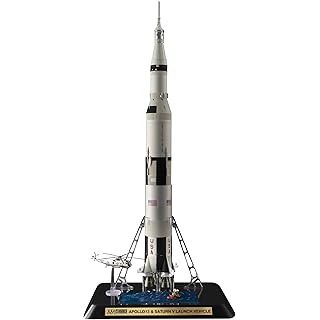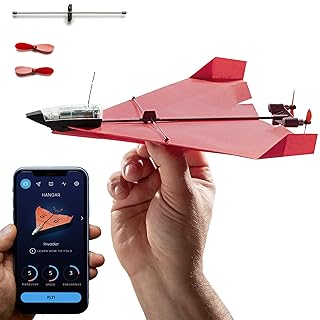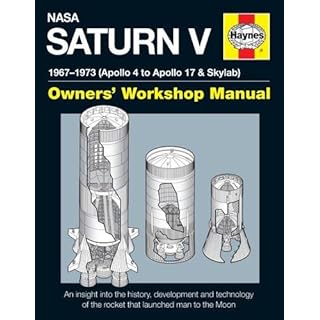American manned space program

After launch of Sputnik, the space race between U.S.A. and U.S.S.R started. Mercury Project was the first manned space program in U.S.A. And it's objective are
- To orbit a manned spacecraft around Earth
- To investigate man's ability to function in space
- To recover both man and spacecraft safely
20 times unmanned flights and six manned flights were done, and basic space flight technology were confirmed.
In parallel with this, the unmanned exploration plan "Ranger" and "Surveyor" to the moon were implemented. However, in the first half, the failure continued, and detailed information on the moon was available in 1964.

In 1961, only 20 days after the first manned flight in the United States, Apollo Project to send mankind to the moon was launched in a famous speech by President Kennedy at Rice University. However, there were plenty of technologies to develop before that. The Gemini program is a plan to develop the technology necessary to realize the Apollo program, such as rendezvous, docking, space suit, extravehicular activity etc, And it's objective are
- Make sure that astronauts and equipment can withstand two weeks of space flight.
- Realization of rendezvous with the orbiting spacecraft, docking, and docking propulsion technology.
- Establishment of atmospheric reentry and landing techniques to the planned point.

Then as an announcement of president Kennedy, Apollo reached to the moon face in the end of 1960th. There were many adversity. It was the grand sum of American space development.
Besides, Soviet went for the moon too with N-1 rocket. But the launch of N-1 failed four times, and the project was canceled.

Using Apollo resources, this was a project of making laboratory(Lab) in the Earth orbit(Sky). S-IVB : the third stage of Saturn booster was converted to the Space station can live three astronauts for long term. Three launch were done and total nine astronauts live for 171 days and 13 hours, and hundreds of experimentation, investigation were performed.
But because of budget cutback, SkyLab flew with no crew for years and years. If the Space Shuttle project started earlier, more astronauts aboarded the SkyLab. But it was delayed, then orbit of SkyLab descented by atmospheric attrition, it went down to Indian Ocean and Australia in July 1979 at last.

After the space race, international alliance are needed for space development. So U.S.A. and U.S.S.R. planned to develop common rendezvous and docking system for future international alliance.
The device called "ASTP Docking Module" was attached to the top of Apollo CSM. This module connected between Apollo and Soyuz, absorbed difference of pneumatic pressure.

SpaceShuttle was planned as low-cost, reusable spacecraft. Final design was decided in March 1972, but there were many new technologys to develop, like heat-stable tiles and so on, first flight was done in 1981. After that it brings lot of results like ISS : International Space Station and Hubble Space Telescope.
In 28.Jan.1986, OV-099 : Challenger at mission STS-51-L, exploded in the sky 73 second after the launch because of malfunction of SRB O-rings. Seven astronauts were lost.
In 01.Feb.2003, OV-102 : Columbia at mission STS-107, breaked down in the sky while re-entry, 16 minutes before landing. Seven astronauts were lost.
Just a few hundred times of flight is still in the stage of test flight in practical aircraft including airliners, the craft that has already been over 20 years since the first flight has gone aging and the United States decided to retire the Space Shuttle after two accidents. Using only a few missions left, it completed the International Space Station and stopped operating in 2011.

Then Constellation project has been frozen once a matter of money, development of the spacecraft called Orion MPCV(Multi-Purpose Crew Vehicle), based on the Orion CEV spacecraft was announced in 2011. Orion CEV aimed for manned flight to ISS and moon, but Orion MPCV aims manned flight to farther bodies such as Mars and asteroids. Lockheed Martin Corp. will continue to develop this spacecraft from Orion CEV. Like Orion CEV, the appearance is a conical capsule type with a base length of 16.5 feet (5 m). It weighs about 23 tons and carry four astronauts at once. Of course, when heading to Mars or an asteroid, a resident module is prepared separately, and the astronaut will live here. Also, instead of Ares, a new booster called the Space Launch System (SLS) will be developed.
The first unmanned Orion MPCV was launched by Delta IV Heavy rocket on December 5, 2014 with mission name Orion Exploration Flight Test-1 (EFT-1), and made 2 laps of 3,600 miles (5,800 km) over the earth. Exploration Mission-1 (EM-1), the first flight combining Orion MPCV and SLS, is scheduled to do lunar orbiting flight unmanned in 2020.
In addition, NASA plans to utilize the capsule type spacecraft developed by two private companies (CST-100 Starliner of Boeing Company, Crew Dragon of SpaceX Company) to transport astronauts to ISS. The test flight is expected to start as early as 2019.
But these plans are against the mass transport to space that was expected in the success of the space shuttle, Advancement to the space development of the general public seems to be greatly recessed. For a while, the general public will only feel a cosmic mood of just a few minutes on an out-of-atmosphere ballistic flight planned by a private space travel agency such as Virgin Galactic.
Related books
-
Project Mercury: America in Space Series

Schiffer 2016/02/02 USD17.44
Project Mercury was America's entry into the manned spaceflight program. When the program began in 1958, the Soviet Union was far ahead of the US in the race for supremacy in space. With immense effort, and in record time, NASA, the newly created spaceflight organization, developed a space transport system with orbital capsule and booster rockets. They used it to send Alan Shepard on a first suborbital "jump" into space in May 1961, and in February 1962 to make John Glenn the first American astronaut to orbit the earth. Nevertheless, the Americans were beaten by the Soviets in the race to put the first man into space. Project Mercury was, however, the foundation for NASA's later success in the race to the moon. All Project Mercury missions are discussed, including details on all craft and the astronauts involved. Superb color, archival images, cutaways and plans are also included.
-
Project Mercury Familiarization Manual Manned Satellite Capsule

Periscope Film LLC 2011/05/18 USD28.00
On October 4, 1957 at 10:28 Moscow time, a rocket carrying the world's first orbiting satellite roared into space, signaling a new era in human history and the beginning of the so-called "space race" - an epic rivalry pitting the technological know-how of the Soviet Union against that of the United States. Despite some highly publicized failures, the USA managed to answer the Russians with the successful launch of Explorer 1 in January of 1958. The next major milestone would be to put a human into orbit, a goal that defined the USA's Project Mercury. After a long series of test launches including a sub-orbital flight with the chimp Ham on board, Mercury astronaut Alan Shepard became the first American in space.
-
Project Gemini: America in Space Series

Schiffer 2016/02/15 USD13.64
In just two-and-a-half years, beginning in 1964, two unmanned and ten manned flights took place in the Gemini program. This program was the turning point in the space race with the USSR; from then on the Americans took the lead. Flights lasting two weeks, into the Van Allen Belt, the first extravehicular activities, rendezvous maneuvers and docking with other spacecraft―all of this was achieved by Gemini, paving the way for the more demanding moon landing program. It was not all success, however. Like almost every significant undertaking, Project Gemini also had its dramas and tragedies. All Project Gemini missions are discussed, including details on allcraft and the astronauts involved. Superb color, archival images,cutaways and plans are also included.
-
NASA Project Gemini Familiarization Manual Manned Satellite Spacecraft

Periscope Film LLC 2011/05/26 USD40.45
Just ten days after Alan Shepard Jr. became America's first man in space on May 5, 1961, President John F. Kennedy challenged the nation, suggesting that the United States should land a man on the moon by the end of the decade. The ambitious goal of Project Apollo required a series of intermediate steps, which were to be explored by Project Gemini. Created on January 3, 1962, Project Gemini's objectives were many. During ten manned flights in 1965 and 1966, astronauts would perform spacewalks, rendezvous with orbiting vehicles using maneuvering and propulsion systems, and perform docking tests.
-
Project Apollo: The Early Years, 1961-1967 (America in Space Series)

Schiffer 2016/10/28 USD19.99
In May 1961, American president John F. Kennedy committed the nation to carrying out a manned landing on the moon before the end of the decade. This volume covers the early years of the Apollo program (1960-1967), still the most significant space effort in the history of mankind. In a very short time, NASA developed the mighty Saturn rockets, the Apollo spacecraft, and the lunar lander. This breathtaking development came at a cost, however, as in 1967 astronauts Virgil Grissom, Roger Chaffee, and Edward White lost their lives during a test. Ten months after the catastrophe, however, the Saturn V, America’s moon rocket, made its triumphal unmanned maiden flight. After that, just twenty more months would pass before man set foot on another celestial body for the first time.
-
Skylab 1 & 2: The NASA Mission Reports

Apogee Books 2015/08/11 USD29.99
A chronology of U.S.-Soviet cooperation in space travel during the first 3 decades of human spaceflight (1961-1992) that tracks both successful and unsuccessful attempts at cooperative programs. For example, the Apollo-Soyuz Test Project (ASTP) is covered, but so too are discussions of Salyut-Shuttle missions, which ultimately did not occur. This expanded edition includes NASA press releases relating to ASTP as well as other U-S.-Soviet space efforts since then, such as Mir-Shuttle missions and tests of a prototype Soviet Mars rover, since then. Includes a bibliography drawn to all space cooperation and topics relevant to the discussion thereof.
-
The Partnership: A NASA History of the Apollo-Soyuz Test Project (Dover Books on Astronomy)

Dover Publications 2011/01/14 USD29.95
The 1975 Apollo-Soyuz Test Project (ASTP) was the first joint U.S.-Soviet space flight, in which teams from the two nations met in orbit to test an international docking system and conduct both collaborative and independent studies. Although primarily a symbol of international goodwill, the mission provided useful experience for future cooperative ventures between the two nations. This authorized NASA history features many fascinating interviews with participants as well as firsthand observations of ASTP activities.
-
NASA Space Shuttle Manual: An Insight into the Design, Construction and Operation of the NASA Space Shuttle (Haynes Owners Workshop Manuals)

Zenith Press 2011/04/18 USD44.32
Designed between 1969 and 1972 and first flown into space in 1981, the NASA Shuttle will have flown almost 140 missions by the time it is retired in 2011. David Baker describes the origin of the reusable launch vehicle concept during the 1960s, its evolution into a viable flying machine in the early 1970s, and its subsequent design, engineering, construction, and operation. The Shuttle’s internal layout and systems are explained, including the operation of life support, electrical-power production, cooling, propulsion, flight control, communications, landing, and avionics systems.


















